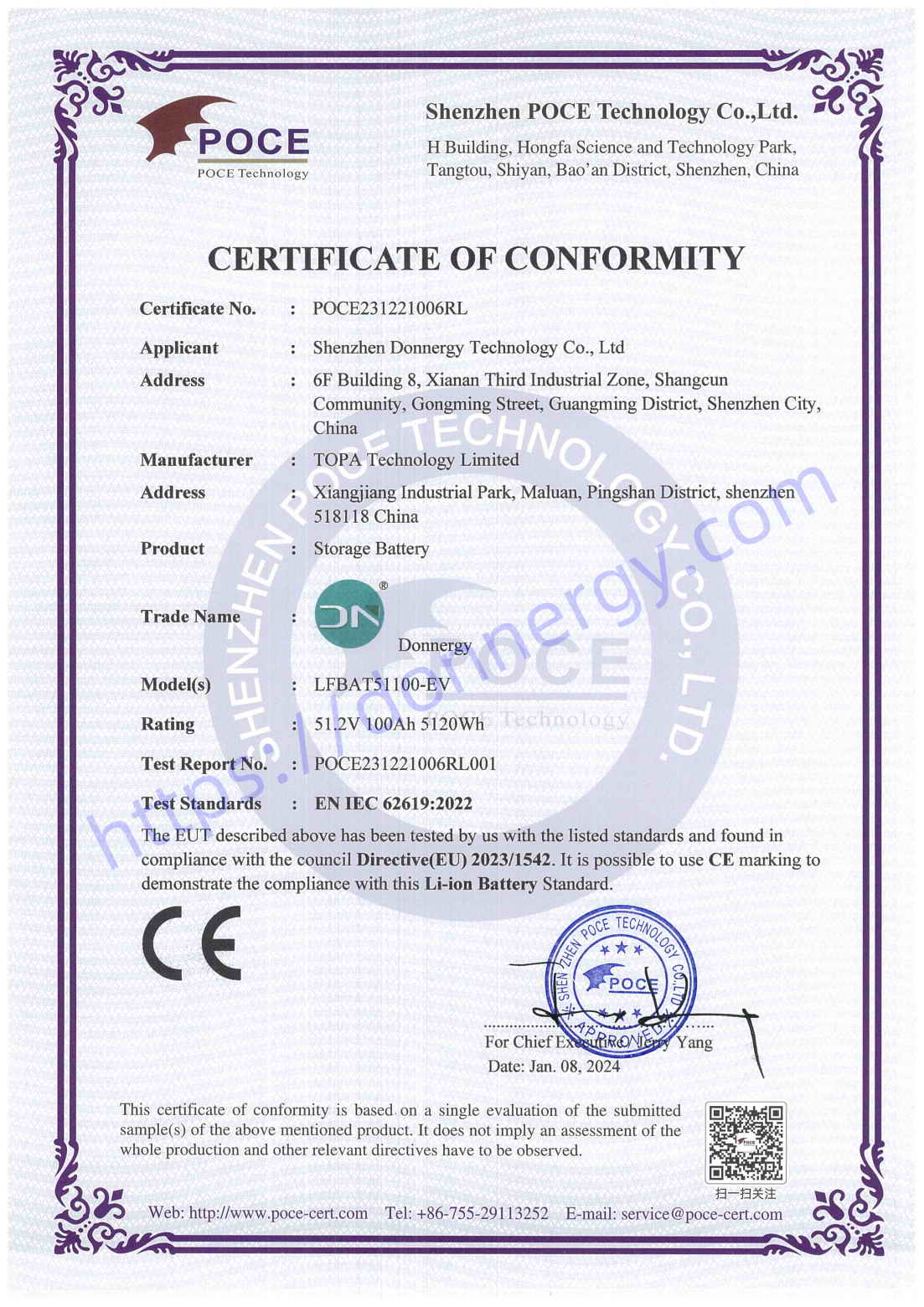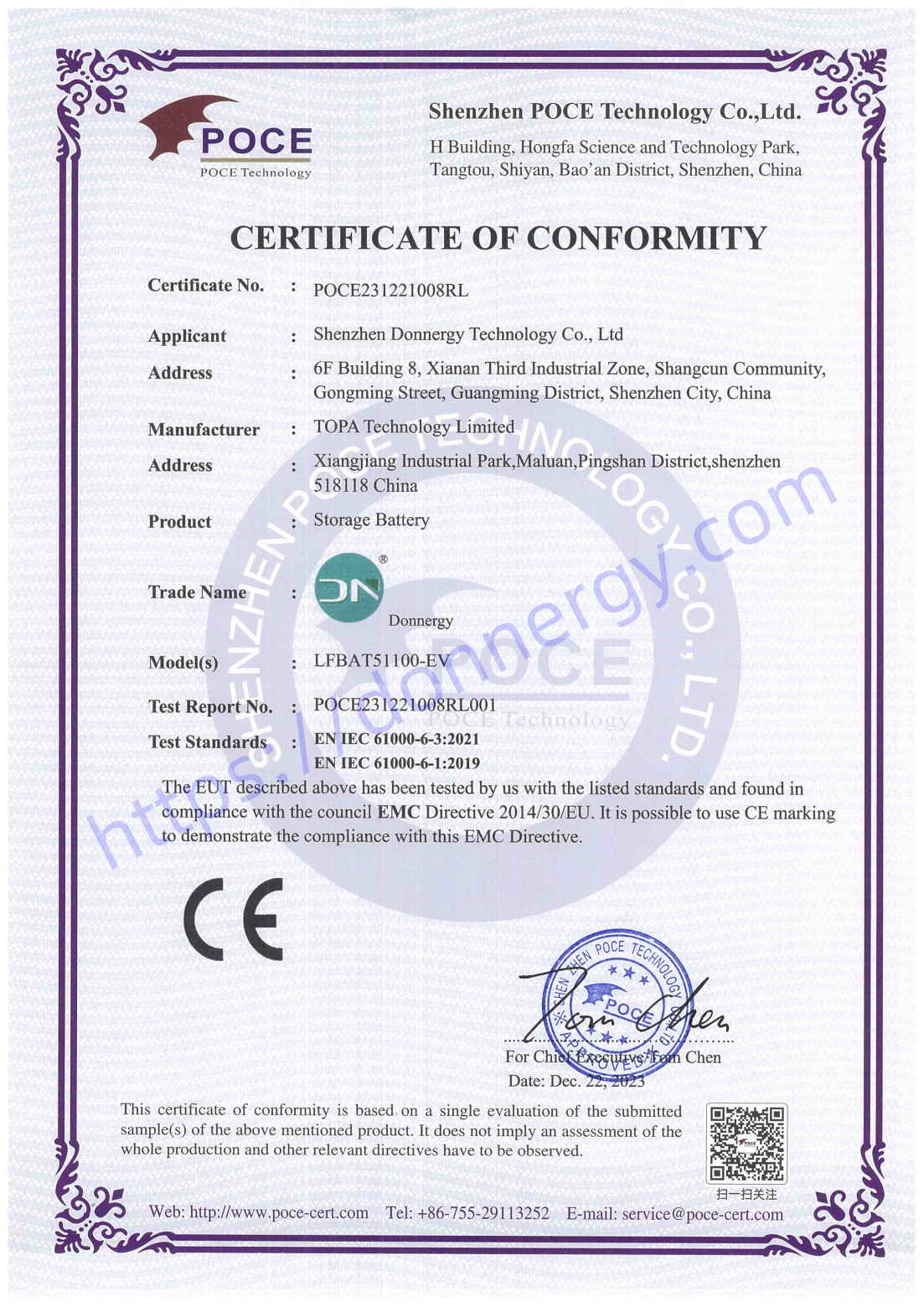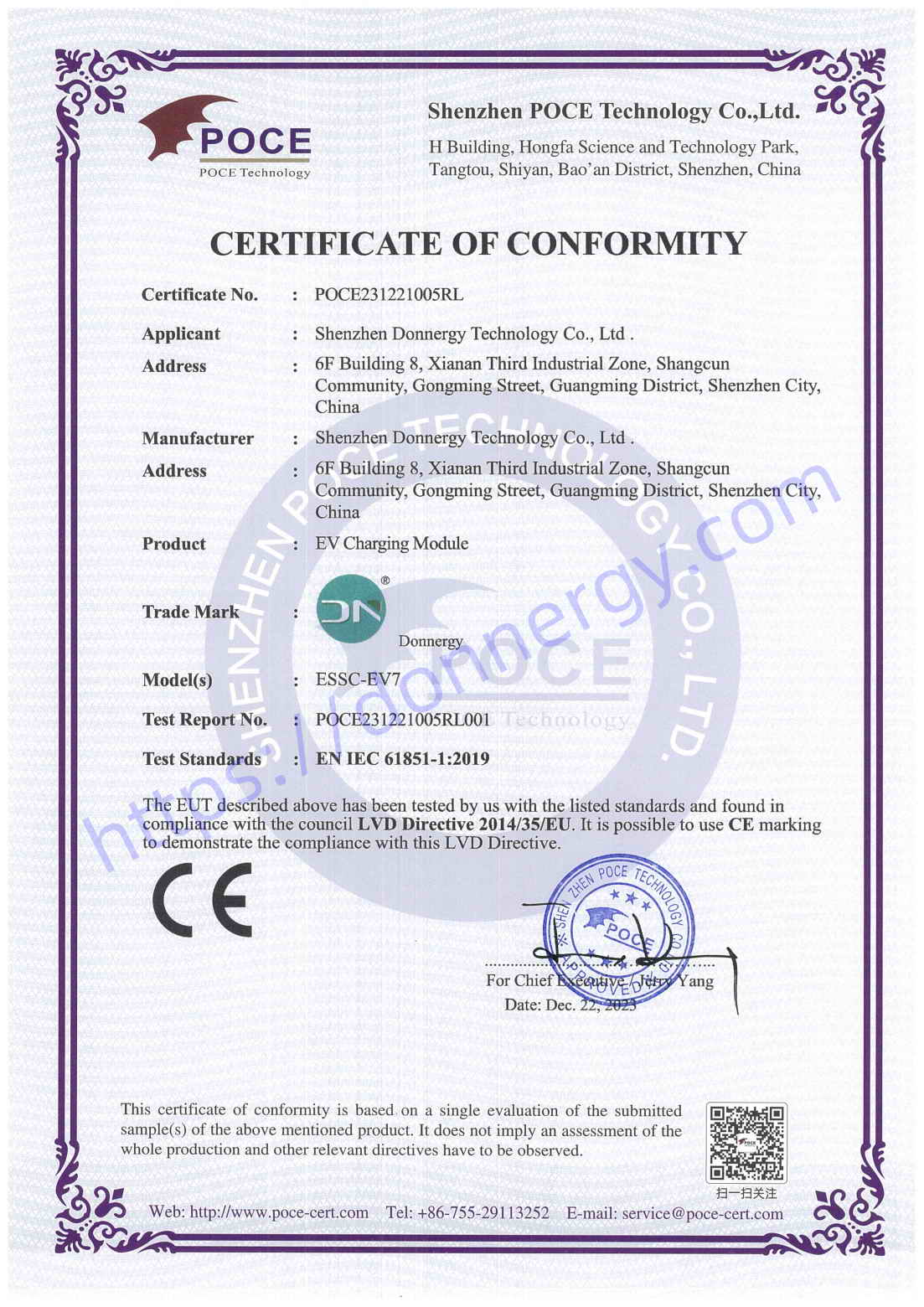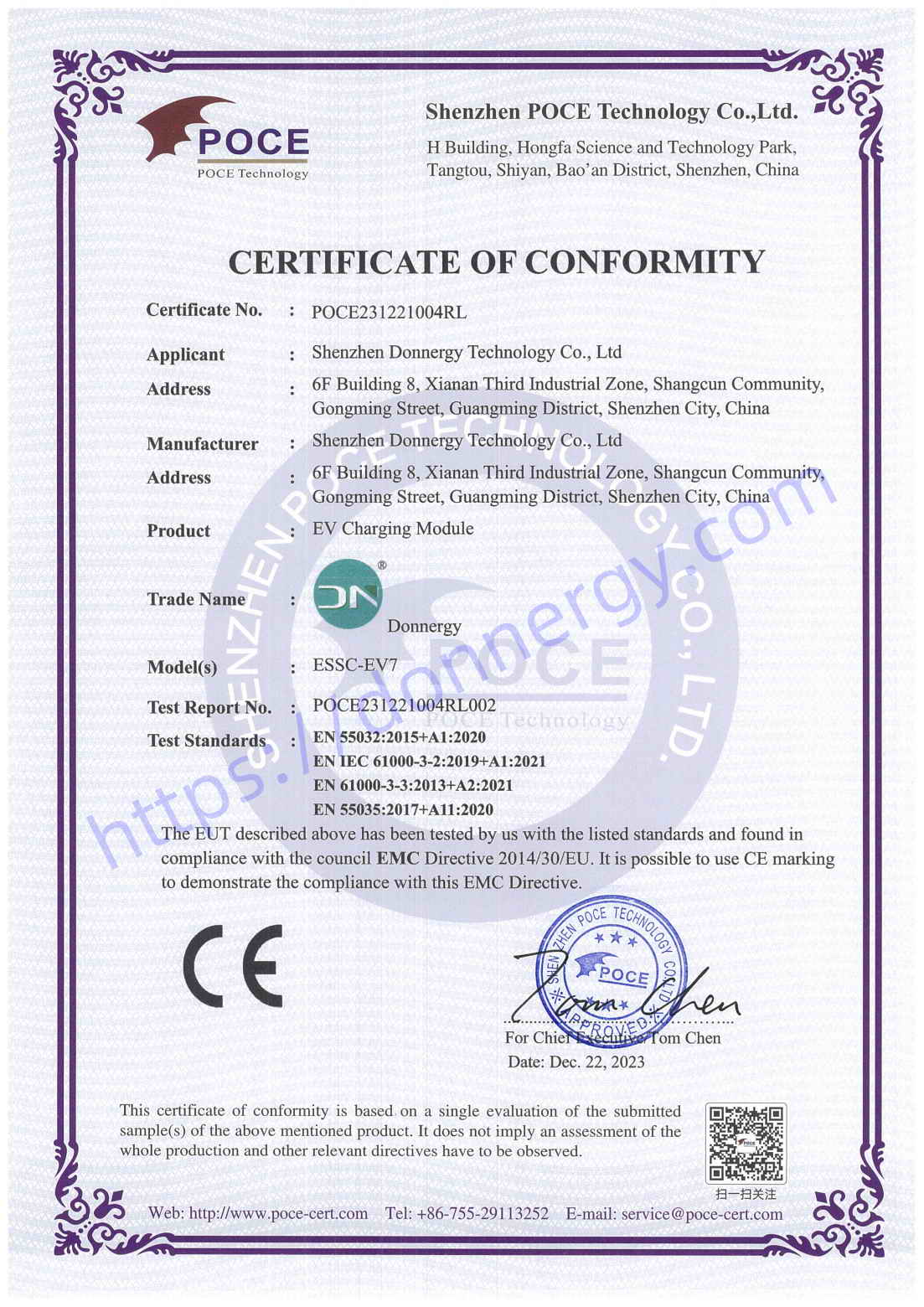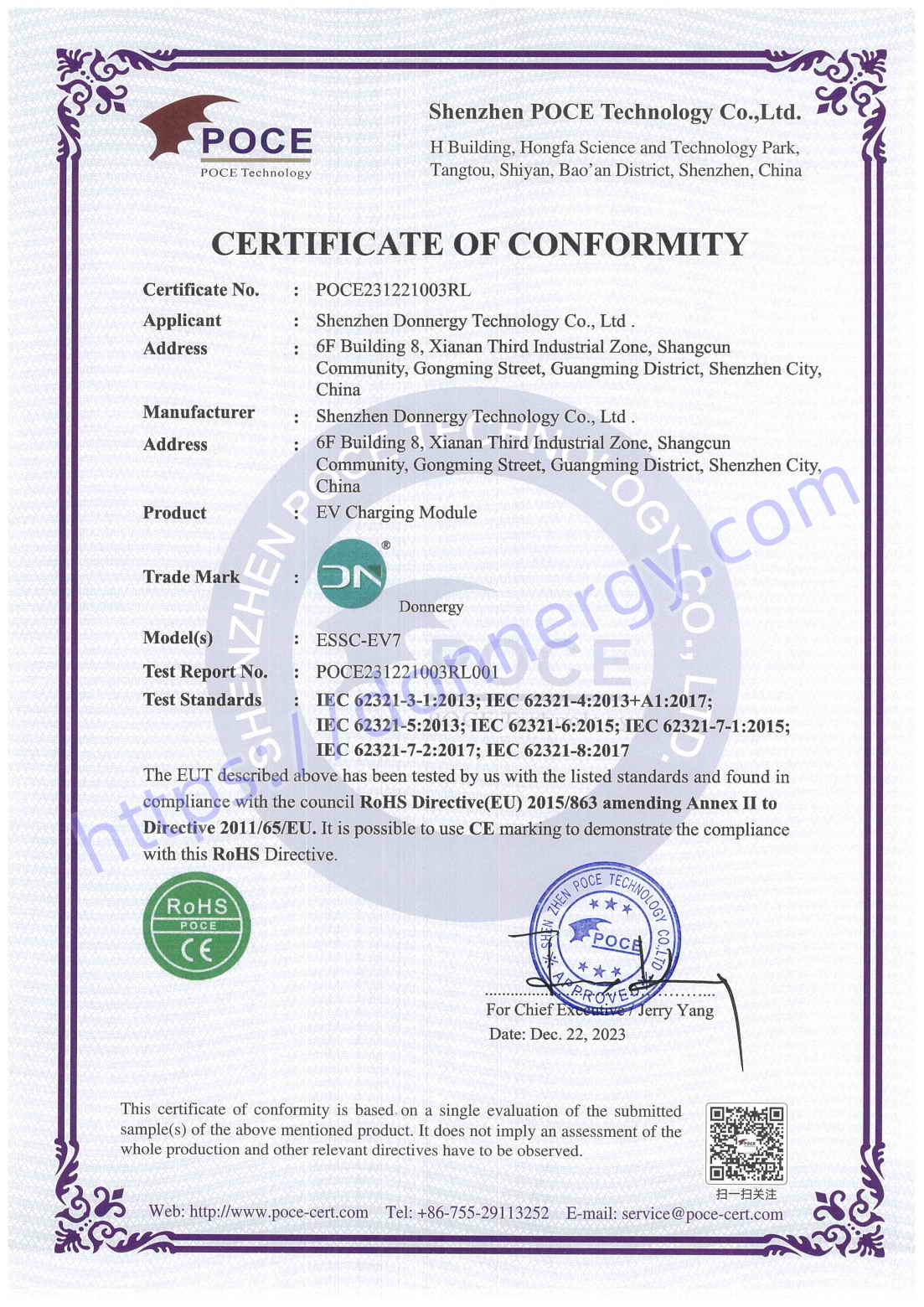7KW 11KW EV Charger with Energy Storage System
Model: ESSC-HY5-EV7-BAT5
Donnergy 7KW, 11KW EV charger with energy storage system. 98% Max. Efficiency, 5m AC charging cable output cable. Integrated EV charger and ESS batteries solar inverter, All-in-one design for home use.
PV, Storage, EV charging and Power distribution integrated.
Controlled by built-in DSP and adopt advanced SPWM technology.
Modular design for good expansibility, up to 6 battery modules in parallel.
Easy Installation within 20 minutes individually.
24-hour real-time online monitoring
Wheels for the machine are optional and available at an additional cost.
Certification:
Key Spec
Rated Power(W): 7000
Number of MPP Trackers: 2
Nominal Voltage(V): 220 / 230 / 240
Single Battery Energy(kWh): 5.12
Back-up Rated Power(W): 4500
Max. Efficiency: 98%
Protection Level: IP54
Communication: RS485/CAN/WiFi
Inverter Dimensions (W ×H × D mm): 645 x 557 x 370
EV Charger Dimensions (W ×H × D mm): 650 x 270 x 370
Single Battery Dimensions(W ×H × D mm): 585 x 270 x 370
Base Dimensions (W ×H × D mm): 680 x 110 x 378
Rated Power(W): 11000
Number of MPP Trackers: 2
Nominal Voltage(V): 380/400
Single Battery Energy(kWh): 10
Back-up Rated Power(W): 7200
Max. Efficiency: 98%
Protection Level: IP66
Communication: RS485/CAN/WiFi
Inverter Dimensions (W ×H × D mm): 645 x 557 x 370
EV Charger Dimensions (W ×H × D mm): 650 x 270 x 370
Single Battery Dimensions(W ×H × D mm): 585 x 270 x 370
Base Dimensions (W ×H × D mm): 680 x 110 x 378
7kW home EV charging ESS with hybrid solar inverter all-in-one compact design
Overview
It’s a home EV charging ESS that emerged in 2023 to capture the home market in 2024 and 2025. Under the all-in-one compact design, four parts were highly integrated: EV charger, Stackable ESS batteries, Hybrid solar inverter and Power distribution. It’s a really smart EV charger for home use. Very quick installation for EV owners! Sufficient certification for global market access. Obtain clean energy subsidies. Easy system monitoring, management and upgrading.

Multi-functions
EV charger
Connect the gun to the EV charging socket. Intelligent charging control! Based on a highly integrated charging control board, the EV charger integrates AC power supply, charging control, management, query and communication. That brings a much smaller pile with a simple and reliable layout. Simple wiring for easy operation. Good user experience.
Energy Storage
Modular design for easy energy expansion! The system takes 1 ~ 6 pieces of stackable LiFePO4 batteries (In parallel) for energy storage. Capacity 5.12 kWh for a single battery. Capacity 15.36 kWh for three batteries. Capacity 30.72 kWh for six batteries. There is an LED light on each battery to display the battery status and remaining capacity.
Hybrid solar inverter
As the brain of the systems, the inverter is a typical hybrid solar inverter (On-grid & Off-grid). Adopting advanced SPWM technology, it’s controlled by built-in DSP. By the advanced PCS algorithm, the inverter controls power transmission between the grid, PV, EV, load and battery. The LED lights can show different working status: Standby, Normal working, Warning, Error or Upgrade.
Power distribution
With the technology of intelligent power distribution & power consumption, the 7kW Home EV Charging ESS is a micro-grid device. For EV charging piles, the technology is very important as it brings intelligent dispatching, optimizes charging strategies, improves charging efficiency and reduces grid load.

Working Mechanism of the Systems
The device is designed for building a compact bi-directional PV system with functions of EV charging, hybrid solar inverter, energy storage and power distribution. By the PCS algorithm, power generated by PV panels has the 1st priority to power the loads including charging an EV, the 2nd priority to re-charge the battery (if the power is in excess) and the 3rd priority to feed the grid (if the power is in excess).
When the loads can’t get sufficient power from the PV panels, they automatically obtain power from the batteries with sufficient power. When the battery power becomes insufficient, the loads will automatically turn to the grid for power supply.













